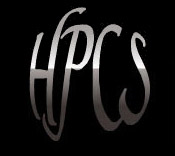Brachial Plexus Injury - What Types of Treatment Are Available?
A diagnosis of brachial plexus injury is made with the help of tests such as MRIs, CT scans or nerve conduction testing. Brachial plexus injury treatment or Brachial plexus surgery will depend upon how severe your injury is. This type of injury can occur at any time, but many of these occur during difficult deliveries when the baby’s shoulders are impacted, causing the brachial plexus nerves to tear or stretch.
The different types of brachial plexus injuries are:
- Neuropraxia: the damaged nerve is stretched out, but not torn
- Avulsions: the nerve is torn from the spine
- Rupture: the nerve is torn, but not at the spinal attachment
- Neuroma: in this the torn nerve has healed but the scar tissue exerts pressure on the nerve preventing it from sending signals to the muscles
Sometimes, these types of injuries heal without any treatment. Children with birth injury of this type often recover by three to four months of age.
If the injury is minor, you can opt for physical therapy and if it is complex, then nerve grafts or transfer is another option. If your child shows any symptoms of a birth injury, consult a medical professional as soon as possible.
The reconstructive surgery procedures for brachial plexus are as follows:
- Nerve graft: in this type, the damaged part of the brachial plexus is removed and replaced with sections of nerves cut from other parts of body.
- Nerve transfer: when the nerve root has been torn from the spinal cord, the surgeons often take a less important nerve that is still attached to the spinal cord and hook it or fix it into the nerve that is no longer attached.
- Muscle transfer: this is a brachial plexus treatment in which your surgeon removes a less important muscle from another part of the body and transfers it to your arm. The brachial plexus injury repair treatments give you complete relief and allow you to use your hands and arms as much as possible.
Nerves that have been stretched have a fair chance of recovering on their own. But the healing process forms scar tissue that must be removed surgically to improve the nerve’s function. Surgical repair is often required for nerves that have significant surrounding scar tissue. Erb’s palsy treatment is provided for children with injury of the Erb’s type. The child’s disability depends on the degree of the Erb’s palsy, which nerves are injured, and how severely they have been damaged. This treatment can help your child gain control of his/her upper extremities.
A birth injury is unfortunate. If medical negligence is the reason for your child’s disorder, consult a medical professional immediately. Often the child suffers from birth due to him/her being in a breech position or larger than 9 lbs, or from a medical instrument being used to pull the baby from the birth canal.








